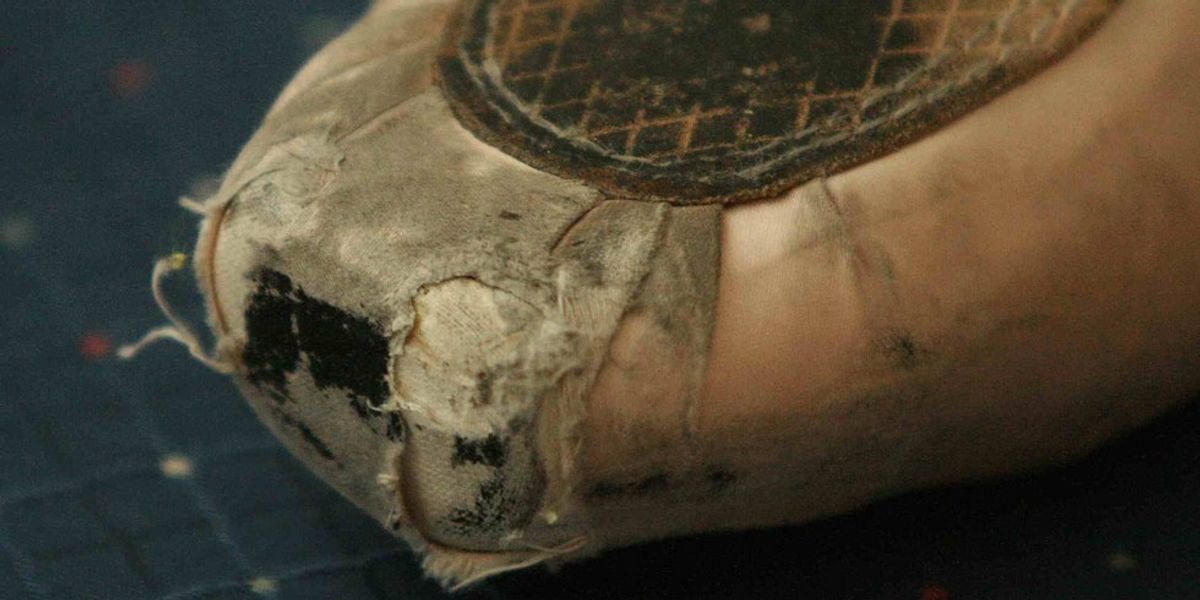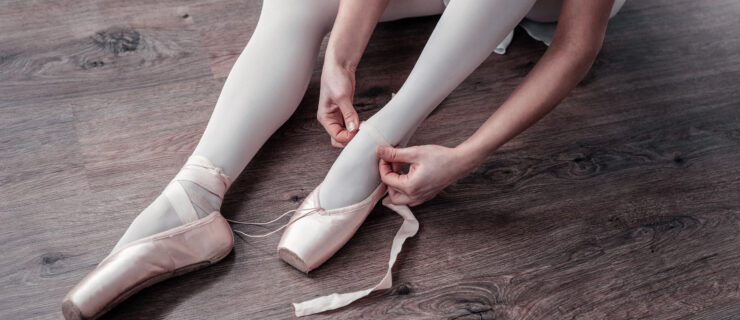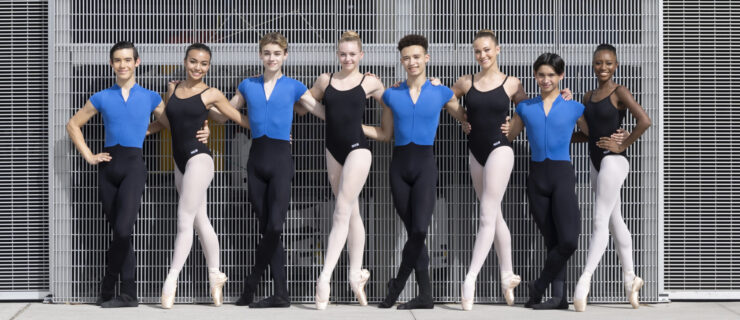What's That Ratty Pair of Pointe Shoes Doing to Your Feet?
When it comes to comfort, well-worn pointe shoes beat a new pair. A fresh pair can feel constricting, while an old one molds to your feet and bends just the way you like. Not to mention, new shoes take time and effort to break in, and think of all the money spent on them throughout a dancer’s training and career. So surely it makes sense to use your old pointe shoes as long as you possibly can.
As this study suggests: Don’t do it.
New Shoes Versus Old
Researchers based in the United Kingdom asked 15 dancers, mostly from the English National Ballet, to do a series of bourrées while the team filmed them and gathered other data. In one condition, the dancers wore new pointe shoes. In the other, they wore shoes that had been used at least 20 hours.
The difference? “The ankle and arch of the foot curved significantly more wearing the old shoe compared to the new shoe,” says co-author Nicola Theis, a senior lecturer in the School of Sport and Exercise at the University of Gloucestershire.
While a dramatic curve sounds lovely, a foot in an old shoe actually ends up too stretched. The foot curves too much at the ankle, and too much at the arch. “The toes curl under the foot, rather than there being a straight line from the knee to the toes as we would want,” Theis says. This may be “because the shank of the shoe becomes more bendy over time, which means it no longer provides support to the ankle and the arch.”
A Recipe for Injury
The ligaments of the foot may take the brunt of this misalignment. Wearing old pointe shoes may cause the ligaments that run between the metatarsals, the five long bones along the length of the foot, to stretch too much. Also, the ligaments that stabilize the ankle could stretch or tear, resulting in a strain. Or there could be stress fractures in the bones of the foot.
Theis’ paper cites previous studies that indicate that between 14 and 57 percent of female ballet dancers suffer from foot and ankle injuries, often due to the extreme positions of pointe work. She says these injuries “are concerning from the point of view that a dancer could be unable to perform for months if injured, and rehabilitation may take considerable time.”
The study did find one piece of good news: In old pointe shoes, the toe box still does a good job protecting the toes from the impact force of the floor and keeping the dancer stable. Rather, it’s the shank, or sole of the shoe, that dancers need to keep their eyes on.
Keep ‘Em Fresh
While additional research would be required to determine the exact length of time the shank continues to give decent support, it appears that changing your shoes more often is safer than changing them too little. Also keep in mind that support time varies by brand and style, with each offering different shank strengths.
And while breaking in shoes is an important step, actions like bending and crushing them only make them deteriorate sooner and reduce their lifespans. “The risk of injury may therefore occur after less hours of wear,” says Theis.
Look for the Signs
But how can you tell when your shoes have had it? One indicator, Theis says, is that a dancer “may be able to feel the toes starting to curl underneath the foot” as the shank bends too much (rather than the foot being part of that straight line from hip to knee to ankle to toe). Ankle or foot pain is another big-time sign you shouldn’t ignore.
Theis also suggests that dancers do ankle and foot strength training to “help them use their muscles to stabilize the position en pointe.” (Check out exercises like these.)
While it’s amazing what pointe shoes can enable a dancer to do, they are highly vulnerable to the ravages of time—and so are your ankles and feet.






